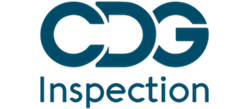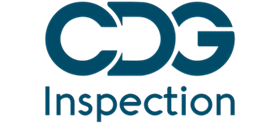Introduction:
In the world of pharmaceuticals and manufacturing, quality control and assurance are paramount. The safety and efficacy of pharmaceutical products depend on rigorous processes, adherence to regulatory standards, and continuous monitoring. One company that plays a vital role in this ecosystem is CDG Inspection Limited. In this article, we will explore CDG Inspection Limited and delve into the process of tracking and tracing products in the supply chain under the guidelines of current Good Manufacturing Practices (cGMP).
CDG Inspection Limited: A Brief Overview
CDG Inspection Limited is a renowned name in the field of pharmaceutical quality control and inspection services. Established with a commitment to ensuring product quality and safety, the company specializes in providing inspection, audit, and compliance services to pharmaceutical and manufacturing industries. Their services encompass a wide range of activities, from equipment validation to regulatory compliance assessments.
Services Offered by CDG Inspection Limited
- Quality Assurance Audits: CDG Inspection Limited conducts comprehensive audits to assess compliance with cGMP and other industry-specific regulations. These audits help identify areas for improvement and ensure that pharmaceutical companies are following best practices.
- Validation Services: Validation is a critical aspect of cGMP compliance. CDG Inspection Limited offers validation services for equipment, processes, and systems to ensure they meet regulatory requirements.
- Training and Consultation: The company provides training and consultation services to help organizations understand and implement cGMP principles effectively. This empowers pharmaceutical companies to maintain the highest quality standards throughout their operations.
- Supplier Audits: To maintain a robust supply chain, it’s crucial to assess and audit suppliers. CDG Inspection Limited assists in supplier audits to ensure that all components and materials meet quality and safety standards.
- Data Integrity Assessment: Data integrity is a top concern in the pharmaceutical industry. CDG Inspection Limited conducts assessments to verify the accuracy, completeness, and reliability of data generated during manufacturing and testing processes.
The Importance of cGMP
Before delving into the process of tracking and tracing products in the supply chain, it’s essential to understand the significance of cGMP. Current Good Manufacturing Practices (cGMP) are a set of regulations enforced by regulatory agencies such as the U.S. Food and Drug Administration (FDA) to ensure the quality and safety of pharmaceutical products. These regulations cover various aspects of the manufacturing process, including facility design, equipment maintenance, personnel training, and documentation practices.
cGMP compliance is not optional; it is a legal requirement for pharmaceutical manufacturers. Failure to adhere to cGMP can lead to serious consequences, including product recalls, regulatory sanctions, and damage to a company’s reputation. To maintain compliance, organizations must implement robust tracking and tracing mechanisms throughout their supply chain.
Tracking and Tracing in the Pharmaceutical Supply Chain
Tracking and tracing products in the pharmaceutical supply chain is a multifaceted process that involves several stages. This process is essential for ensuring the integrity of pharmaceutical products, preventing counterfeiting, and quickly addressing any quality or safety issues that may arise.
Stage 1: Serialization and Unique Identifiers
At the heart of effective tracking and tracing in the pharmaceutical supply chain is serialization. Serialization involves assigning a unique identifier to each individual product or batch. This identifier typically takes the form of a barcode or QR code that contains information such as the product’s serial number, batch number, manufacturing date, and expiration date.
The serialization process begins at the manufacturing facility, where each product is labeled with its unique identifier. This unique identifier is then recorded in a central database, creating a digital record of each product’s journey through the supply chain.
Stage 2: Distribution and Data Capture
Once pharmaceutical products are serialized, they enter the distribution phase. At each point in the supply chain, whether it’s a distribution center, a pharmacy, or a healthcare facility, the unique identifiers are captured and recorded. This can be done using barcode scanners or mobile devices equipped with scanning capabilities.
The captured data, including the product’s unique identifier and location, is transmitted in real-time to the central database. This continuous data flow ensures that the location and status of each product are constantly monitored and recorded.
Stage 3: Verification and Authentication
In the pharmaceutical supply chain, verification and authentication are critical steps in ensuring product quality and safety. Healthcare professionals, pharmacists, and even consumers can use scanning devices or mobile apps to verify the authenticity of a product by scanning its unique identifier.
The central database plays a pivotal role in this process. It serves as a repository of information that can be accessed to confirm the product’s origin, manufacturing details, and distribution history. If a product’s unique identifier is not found in the database or if it raises any suspicions, it can be flagged for further investigation.
Stage 4: Recall and Compliance
One of the most important aspects of tracking and tracing in the pharmaceutical supply chain is the ability to initiate rapid recalls if any safety or quality issues are detected. In the event of a recall, manufacturers and regulatory authorities can quickly identify affected products by querying the central database.
This capability is especially crucial when it comes to addressing issues such as contamination, substandard manufacturing, or counterfeit drugs. Rapid recalls help prevent potentially harmful products from reaching consumers and mitigate any damage to a manufacturer’s reputation.
Stage 5: Regulatory Reporting and Compliance Documentation
cGMP regulations require pharmaceutical manufacturers to maintain detailed documentation of their processes and practices. This documentation includes records of serialization, distribution, verification, and recalls. Regulatory agencies like the FDA can request this information during inspections and audits to ensure compliance.
CDG Inspection Limited, with its expertise in compliance auditing, plays a vital role in helping pharmaceutical companies prepare for and navigate regulatory inspections. Their services ensure that all tracking and tracing processes are in line with cGMP requirements and that documentation is accurate and readily available.
Benefits of Effective Tracking and Tracing
Implementing an effective tracking and tracing system in the pharmaceutical supply chain offers numerous benefits:
- Enhanced Product Safety: The ability to trace products from the manufacturing facility to the end consumer ensures that any quality or safety issues can be addressed promptly, minimizing risks to patient health.
- Counterfeit Prevention: Serialization and authentication measures make it significantly more challenging for counterfeit drugs to enter the supply chain.
- Efficient Recalls: Rapid recall capabilities reduce the impact of recalls on patients and healthcare providers, allowing for quicker removal of unsafe products from the market.
- Regulatory Compliance: Maintaining accurate tracking and tracing records is essential for complying with cGMP regulations and passing regulatory inspections.
- Improved Supply Chain Visibility: Pharmaceutical companies gain better visibility into their supply chain, allowing for more informed decision-making and efficient inventory management.
Challenges in Implementing Tracking and Tracing
While the benefits of tracking and tracing in the pharmaceutical supply chain are clear, there are also several challenges associated with its implementation:
- Cost: Implementing serialization and tracking systems can be expensive, particularly for small and medium-sized pharmaceutical companies.
- Standardization: Achieving global standardization in tracking and tracing practices is an ongoing challenge, as different regions may have varying regulations and requirements.
- Integration: Integrating tracking and tracing systems with existing supply chain infrastructure can be complex and may require significant IT investments.
- Data Security: Protecting the integrity and security of the data generated and transmitted during tracking and tracing is essential to prevent cyberattacks and data breaches.
- Education and Training: Ensuring that all stakeholders in the supply chain, including healthcare professionals and consumers, understand how to use tracking and tracing systems is crucial for their effectiveness.
Conclusion:
In the world of pharmaceuticals, maintaining product quality and safety is not optional; it’s a moral and regulatory imperative. CDG Inspection Limited, with its expertise in quality control and compliance, plays a pivotal role in helping pharmaceutical companies meet and exceed cGMP standards.
The process of tracking and tracing products in the pharmaceutical supply chain, as outlined in this article, is a critical component of ensuring product integrity. Serialization, distribution monitoring, verification, recall readiness, and regulatory compliance documentation are all essential elements of this process.
While challenges exist in implementing tracking and tracing systems, the benefits, including enhanced product safety and counterfeit prevention, far outweigh the drawbacks. In an industry where patient health is at stake, investing in robust tracking and tracing systems is not just a regulatory requirement but a moral obligation.
As pharmaceutical companies continue to innovate and adapt to changing global regulations, the expertise and services provided by companies like CDG Inspection Limited will remain indispensable in safeguarding the integrity of pharmaceutical products and ensuring the well-being of patients worldwide.




